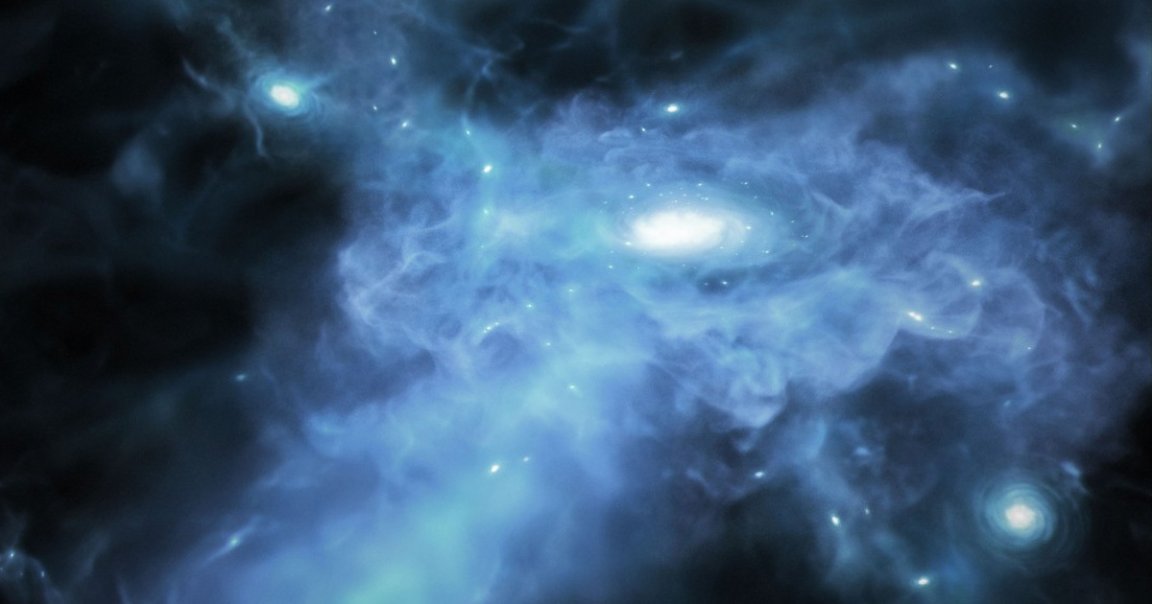
Star Nursery
Using the James Webb Space Telescope, a team of researchers observed the birth of three baby galaxies that were forming just a mere 400 to 600 million years after the Big Bang, making them some of the youngest galaxies ever witnessed.
The international team of researchers detailed their findings in a new study published in the journal Science.
From a cohort of 12 distant galaxies, the researchers noticed that three of them were surrounded by an unusually high amount of hydrogen gas, an essential ingredient for the formation of stars and galaxies — leading the scientists to conclude that these galaxies were actively being formed.
The research should shed light on the birth of the universe itself and how it developed in its earliest years over 13 billion years ago.
“You could say that these are the first ‘direct’ images of galaxy formation that we’ve ever seen,” said University of Copenhagen astrophysics assistant professor and the study’s lead author Kasper Elm Heintz in a statement. “Whereas the James Webb has previously shown us early galaxies at later stages of evolution, here we witness their very birth, and thus, the construction of the first star systems in the universe.”
Pushing the Boundaries
The researchers plan to build on this discovery with more observation time with the James Webb Space Telescope.
“For now, this is about mapping our new observations of galaxies being formed in even greater detail than before,” said University of Copenhagen doctoral student and study c0author Simone Vejlgaard in the statement. “At the same time, we are constantly trying to push the limit of how far out into the universe we can see. So, perhaps we’ll reach even further.”
Thanks to the James Webb, we’ve been able to peer into the earliest days of the universe, allowing us to get a better understanding of how galaxies are born and how they evolve over billions of years.
“One of the most fundamental questions that we humans have always asked is: ‘Where do we come from?'” said study co-author and University of Copenhagen astrophysics professor Gabriel Brammer. “Here, we piece together a bit more of the answer by shedding light on the moment that some of the universe’s first structures were created.”
“It is a process that we’ll investigate further, until hopefully, we are able to fit even more pieces of the puzzle together,” he added.
More on the James Webb Space Telescope: Scientists Befuddled by Impossible Galaxy Seen by James Webb